
DISHWASHER SETTINGS, CYCLES AND RUN TIMES
Dishwashers come with different cycles to help you get the clean you need. Choosing a dishwasher cycle depends on what you’re washing and how dirty the load is. Some common cycles include normal, heavy, delicate and high temp.
The menu of available cycles will differ depending on your dishwasher, so be sure to check your owner’s manual to learn more about the specific cycles your dishwasher uses to power through post-meal cleanup.
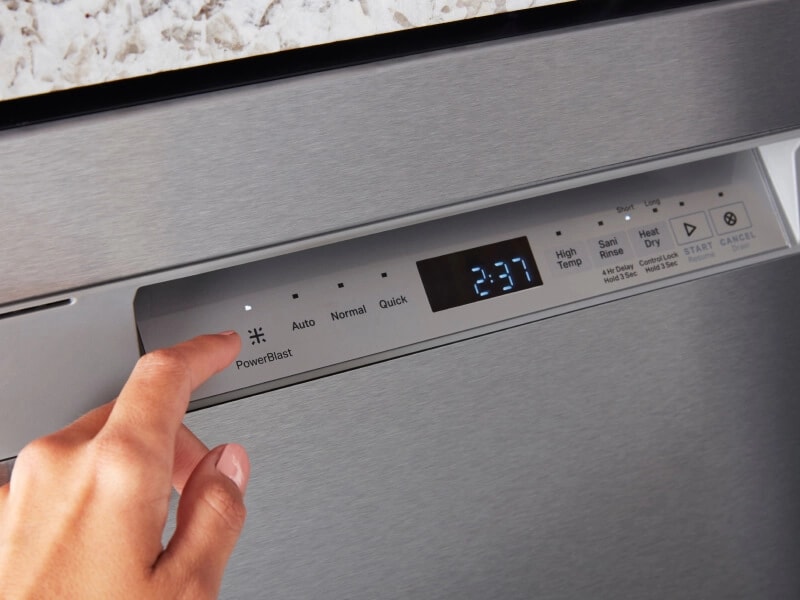
DISHWASHER WASH CYCLES
Modern dishwashers offer a variety of wash cycles and settings designed to help tackle everything from light daily messes to heavy-duty cleanup after large meals. Depending on the cycle you choose, run times vary, and cleaning can range from quick pre-rinses to deep cleaning and sanitizing.
Read more about each dishwasher cycle below to help you determine the best selection for your load.
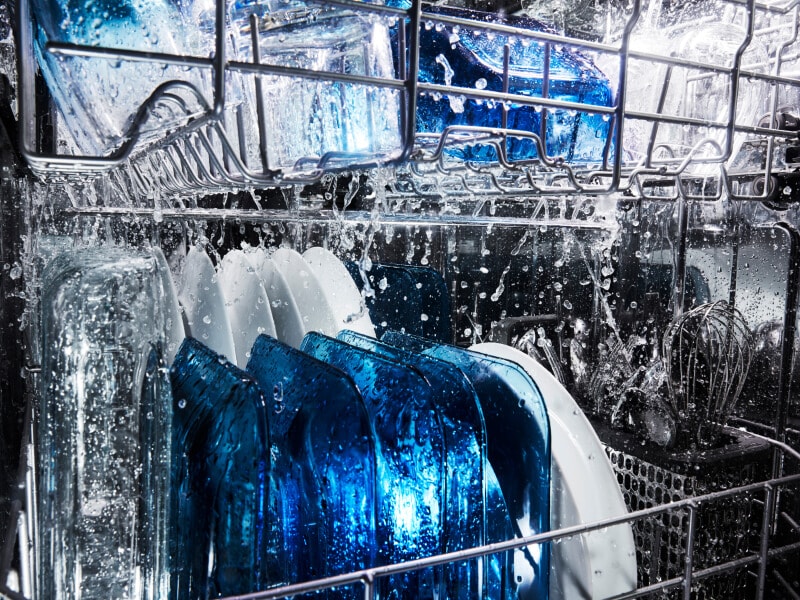
1. SENSOR
With the sensor cycle, your dishwasher senses how dirty your dishes are to automatically optimize the cycle. Cycle time, water usage and water temperature will vary as the sensor adjusts the cycle for the best wash performance. A sensor cycle can be a good choice for everyday use, especially when cleaning dishes with mixed materials or varying levels of mess. For example, on select Maytag® dishwashers, the Auto Cycle automatically measures soil levels and adapts cleaning power to tackle tough messes.
CYCLE TIME: 2-3.25 hours
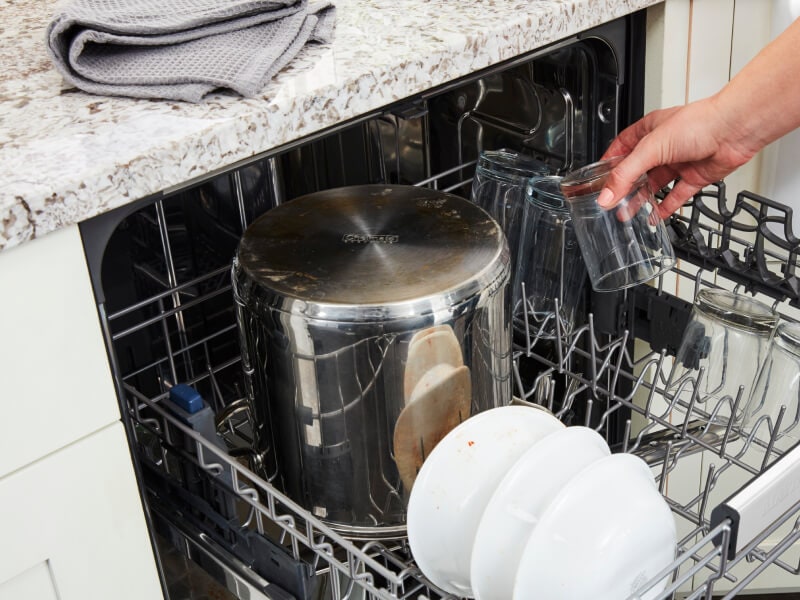
2. HEAVY
The heavy cycle uses higher temperatures and extra water to tackle your toughest messes. This cycle is great for pots and pans or other tough-to-clean dishes.
CYCLE TIME: 2.75-4 hours
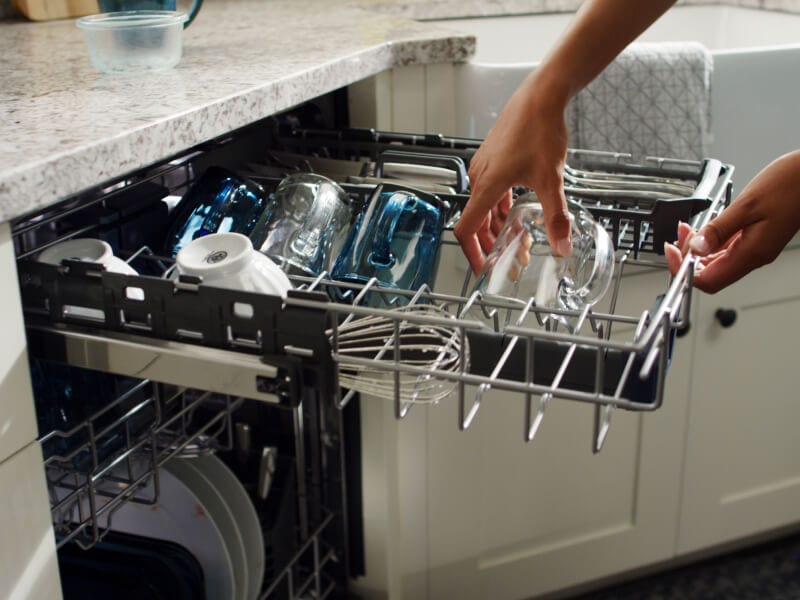
3. NORMAL
The normal cycle is recommended for daily, regular or typical use to completely wash and dry a full load of normally soiled dishes.
CYCLE TIME: 1.5-2 hours
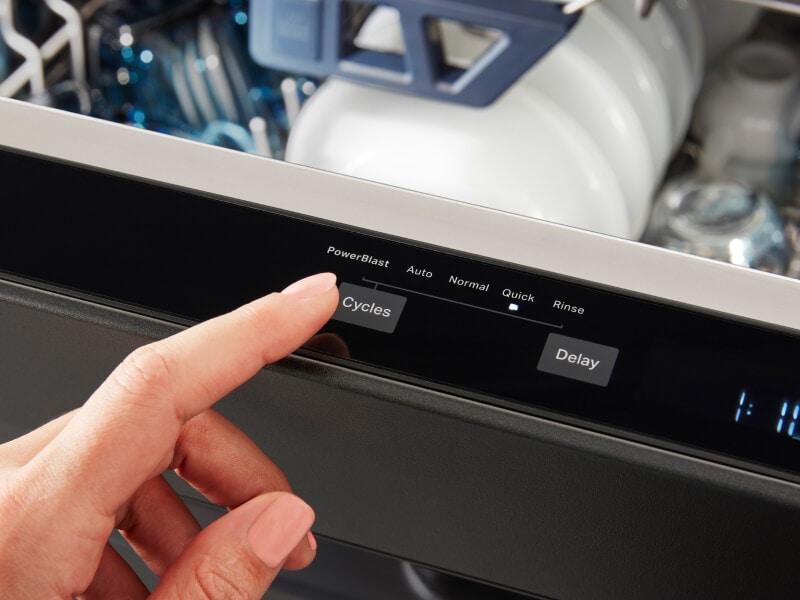
4. 1-HOUR WASH
The 1-hour wash, sometimes called Quick Wash on select Maytag® dishwashers, is great for quickly washing a load of lightly soiled essentials you may need in a hurry. It typically uses higher temperatures and more water than the normal cycle to get the job done.
CYCLE TIME: 1 hour
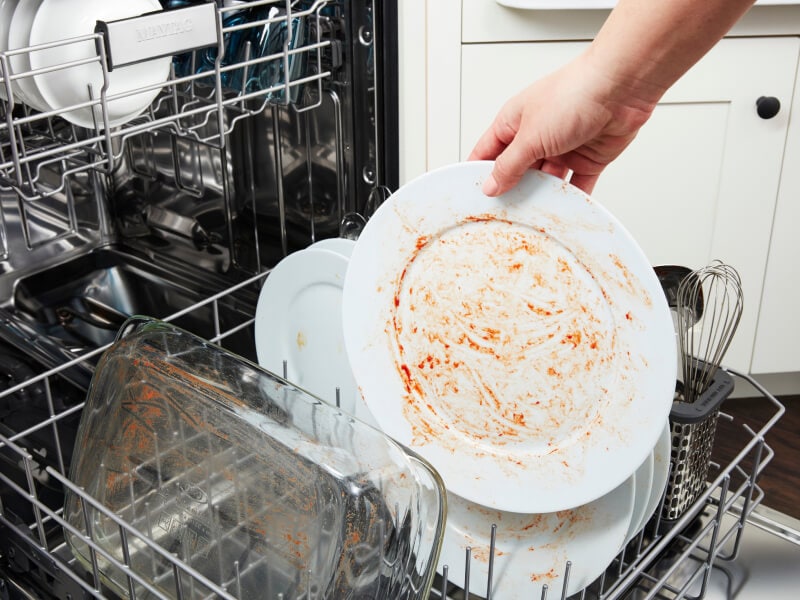
5. PREWASH
Prewash, sometimes also called soak and clean, is used for soaking dishes that have dried-on food messes. This cycle can help save time because you won’t have to worry about soaking the dishes before putting them in the dishwasher.
CYCLE TIME: 6-8 minutes
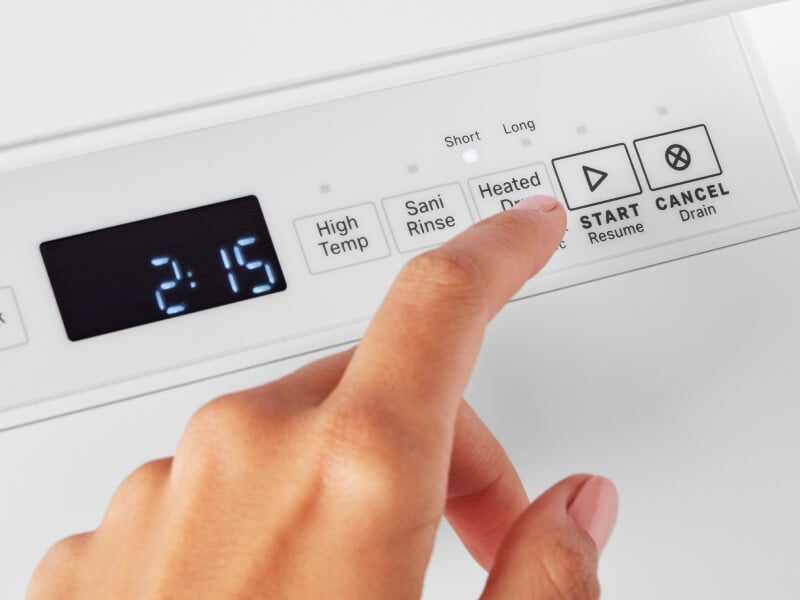
6. HIGH TEMP
The high-temperature option on your dishwasher uses hot water to help remove baked-on food messes from your dishes. With this cycle, the temperature is usually raised to a minimum of 130°F.
The PowerBlast® Cycle, featured on select Maytag® dishwashers, scours away stubborn foods like egg yolk, peanut butter and even dried-on oatmeal with ease. High-pressure jets, a rotating spray arm and increased water temperatures work together to clear food off dishes—so all you have to do is load them in.
CYCLE TIME: Adds 5-13 minutes to wash cycle
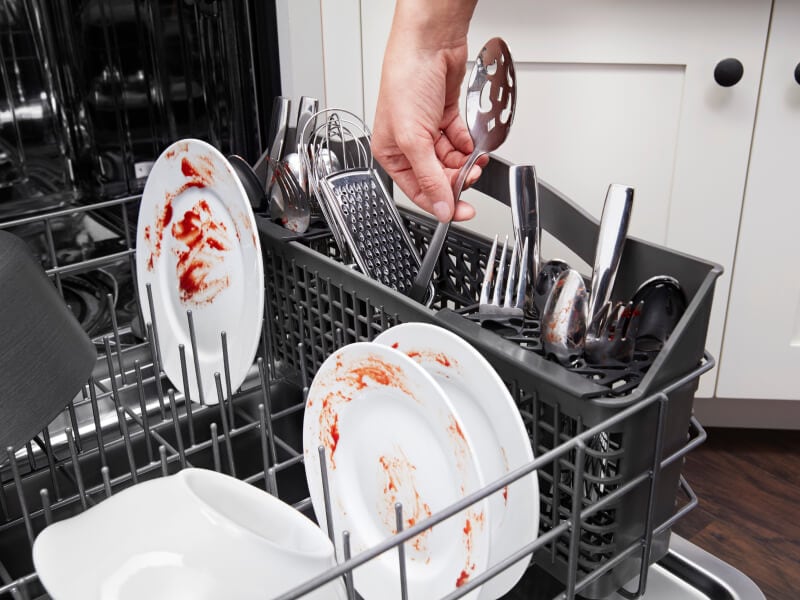
7. SANITIZE CYCLE
The sanitize cycle sanitizes dishes and glassware by increasing the wash temperature up to 140°F and the final rinse temperature to 156°F. This cycle can sanitize dishes in accordance with the National Sanitation Foundation guidelines.
Rapid Sani, on select Maytag® dishwashers, is an example of a sanitize cycle. It eliminates 99.999% of food soil bacteria by adding a high-heat final rinse to sanitize dishes and glassware.1
CYCLE TIME: 3-3.5 hours
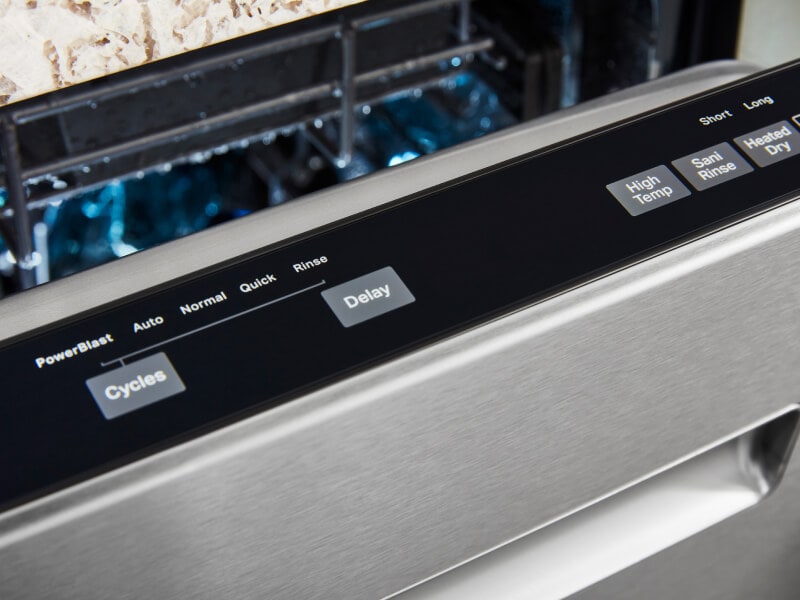
8. DELAY
The delay option on the dishwasher will start the dishwasher’s cycle at a later time or during off-peak energy hours.
CYCLE TIME: Varies
SHOP MAYTAG® DISHWASHERS WITH DUAL POWER FILTRATION
Maytag® dishwashers with Dual Power Filtration allow you to skip soaking, scrubbing and pre-rinsing. The industry-exclusive Dual Power Filtration combines 100% microfiltration and a 4-blade stainless steel chopper to filter out, then dispose of any food in its path. Other dishwashers, like this one from Maytag brand, are equipped with a MaxTub, allowing you to tackle loads of dishes, including bulky pots and pans usually left for the bottom, so there’s no need for a second load.
DISHWASHER DRYING CYCLES
Your dishwasher may also have different drying cycles to choose from that use different levels of heat or lengths of time to dry your load. Read more about common dishwasher drying cycles below.
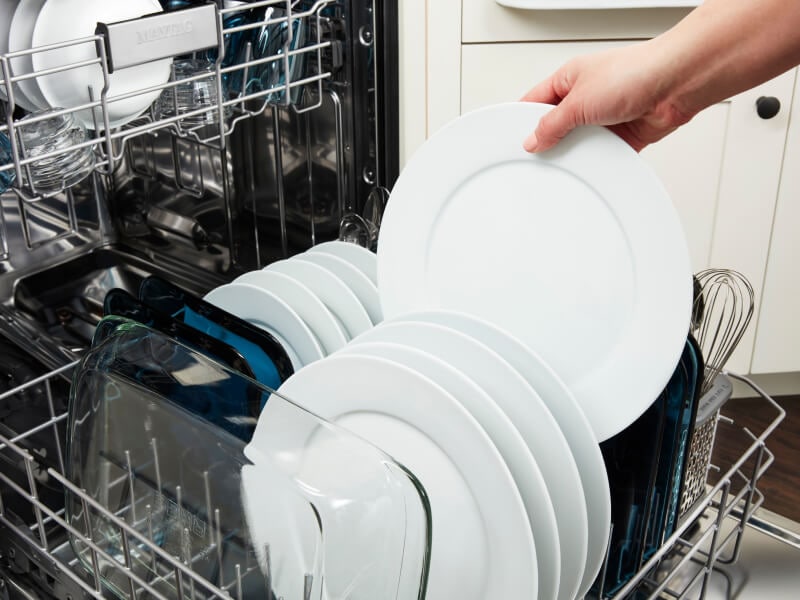
1. HEAT DRY
With this option, heat is generated from a heating element and circulated around your dishes to evaporate water and speed up the drying process. Choosing a heated dry option will add time to your cycle.
CYCLE TIME: 30 minutes
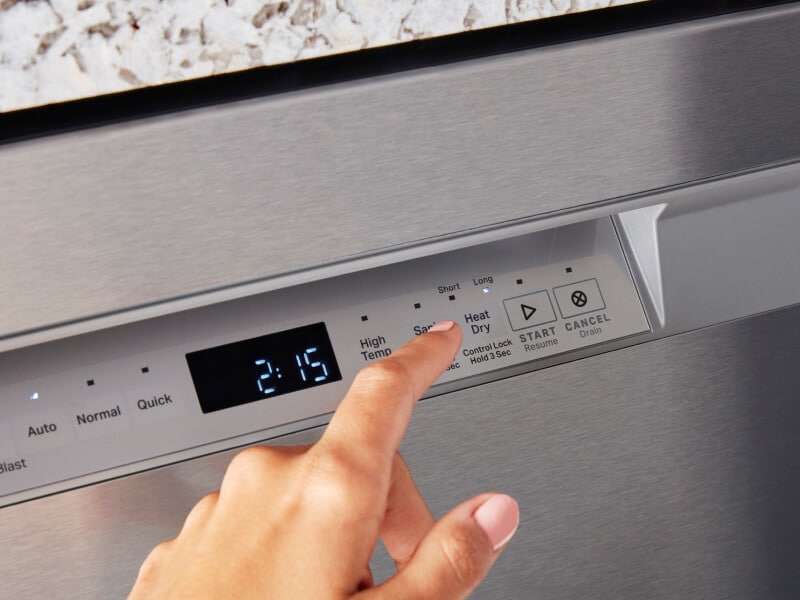
2. EXTENDED DRY
The extended dry option will either increase the final rinse temperature or lengthen the heat dry time. When used with a rinse aid, this option often helps improve drying performance and can help reduce the appearance of water spots on your dishes.
CYCLE TIME: 30 minutes
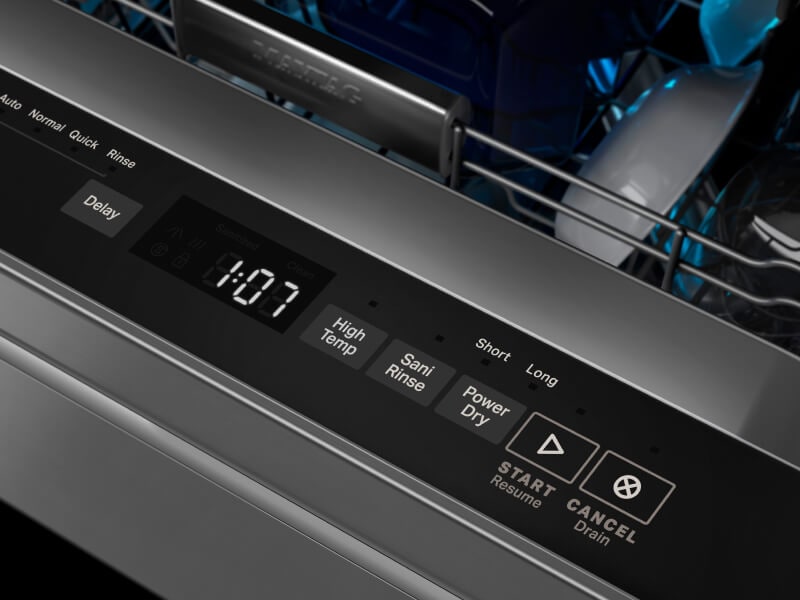
3. SHORT OR LONG POWER DRY
Select Maytag® dishwashers come with a Short and Long PowerDry Option. With these drying options, your dishes are dried with both heat and a fan.
For example, select Maytag® dishwashers are equipped with PowerDry, which muscles out moisture by combining heat and a powerful fan to remove humid air.
CYCLE TIME: Varies
SHOP MAYTAG® DISHWASHERS WITH POWERFUL DRYING SYSTEMS
Maytag® dishwashers offer powerful drying features to help get your dishes cabinet-ready. The Quick Dry Basket on select models has water-repellent technology that shields the silverware basket to boost drying, making your cutlery ready to use straight from the basket. For even more airflow, the Optional Open Air Dry feature, on specific models, automatically opens the door at the end of the wash and dry cycles, allowing hot air out and fresh air to circulate within.

HOW OFTEN SHOULD I RUN MY DISHWASHER?
How often you run your dishwasher depends on your household size and how quickly dishes pile up. Many households run their dishwasher once or even twice a day, especially when cooking at home is part of the daily routine. As a general rule, wait until the dishwasher is full before starting a cycle. Make sure to load it properly and avoid overfilling, which can prevent dishes from getting thoroughly cleaned.
Even if you don’t fill your dishwasher regularly, you should still consider running it at least once a week to help keep it in proper working condition.

Maytag® dishwashers
Dishwashers that muscle through messes
Unload dishes confidently load after load with powerful features on select Maytag® dishwashers
HOW CAN I REDUCE THE TIME ON MY DISHWASHER?
If you’d like a short cycle, choose quick wash or 1-hour wash. If your dishes are very dirty, the dishwasher sensors will allow for a longer wash cycle to ensure they’re cleaned properly.
If you have hard water, limescale or mineral buildup, your sensors may default to a longer setting. Using a cleaner such as affresh® dishwasher cleaner tablets2 once a month may help clean this buildup.
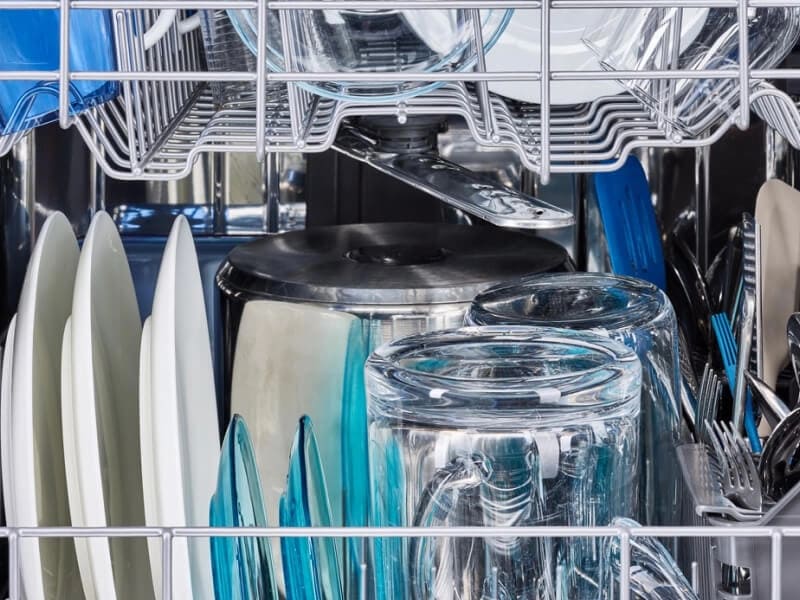
TIPS TO HELP YOUR DISHWASHER CLEAN BETTER
Follow these tips to help get the most out of your dishwasher:
Choose the cycle that describes the most difficult soil in your dish load.
Scrape your dishes of large food items before loading them, but you generally don’t need to pre-rinse them.
Use cycles or options that add extra heat to the wash or rinse portion of the cycle when needed.
If your home is equipped with a water softener, avoid starting the dishwasher when the water softener is in the regeneration cycle, because it may result in poor wash performance.
Clean your dishwasher with a cleaner such as affresh® Dishwasher Cleaner every 30 days.
- Clean your dishwasher filter every three to six months.
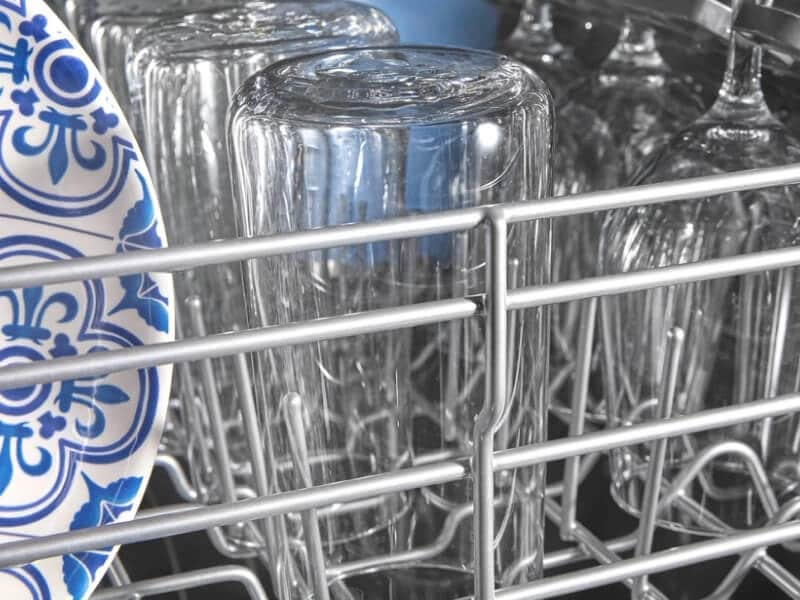
HOW TO GET SPARKLING GLASSES FROM YOUR DISHWASHER
Using the correct amount of detergent and rinse aid can help reduce water spots on glasses. Using dishwasher pods instead of detergent can help ensure that you are using the correct amount.
Water spots on glass can also be caused by hard water. Cleaning your dishwasher every 30 days can help to reduce buildup caused by hard water and help leave your dishes sparkling clean.

HOW TO CHOOSE ECO-FRIENDLY DISHWASHER SETTINGS
Quick or short cycles generally use less energy than a normal cycle. If you are looking for an economical dishwasher, ENERGY STAR® certified dishwashers can help save money on utility bills.
Select Maytag® dishwashers in the Eco Series are designed to get the job done efficiently, delivering uncompromising wash and dry performance while saving you water, energy and money.2
SHOP MAYTAG® DISHWASHERS
With dishwashers from Maytag brand, you can unload confidently with features you can trust to bring the power, load after load. The high pressure jets of the PowerBlast® Cycle and the powerful fan of the PowerDry Option on select models will help you get your dishes done, day after day.

